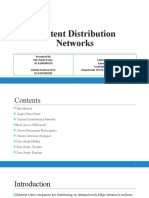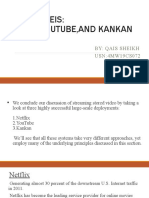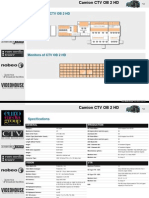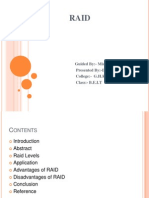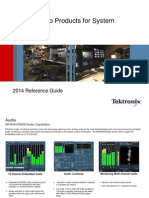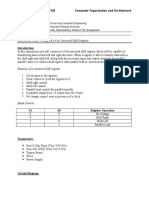0% found this document useful (0 votes)
72 views36 pagesStreaming Protocols Overview
This document discusses various media streaming protocols. It describes how content is encoded and transmitted from sources through networks to end users. Key points covered include:
1) Common streaming protocols like MPEG-TS, RTP, RTSP and RTMP and how they operate at different layers.
2) The encoding and packetization of video/audio streams into MPEG-TS and how MPEG-TS is transmitted over IP networks.
3) The use of protocols like RTP and RTMP to deliver encoded media streams to end users, providing functions like sequencing, timing synchronization and error correction.
Uploaded by
Adrian HuitCopyright
© © All Rights Reserved
We take content rights seriously. If you suspect this is your content, claim it here.
Available Formats
Download as PDF, TXT or read online on Scribd
0% found this document useful (0 votes)
72 views36 pagesStreaming Protocols Overview
This document discusses various media streaming protocols. It describes how content is encoded and transmitted from sources through networks to end users. Key points covered include:
1) Common streaming protocols like MPEG-TS, RTP, RTSP and RTMP and how they operate at different layers.
2) The encoding and packetization of video/audio streams into MPEG-TS and how MPEG-TS is transmitted over IP networks.
3) The use of protocols like RTP and RTMP to deliver encoded media streams to end users, providing functions like sequencing, timing synchronization and error correction.
Uploaded by
Adrian HuitCopyright
© © All Rights Reserved
We take content rights seriously. If you suspect this is your content, claim it here.
Available Formats
Download as PDF, TXT or read online on Scribd
/ 36




